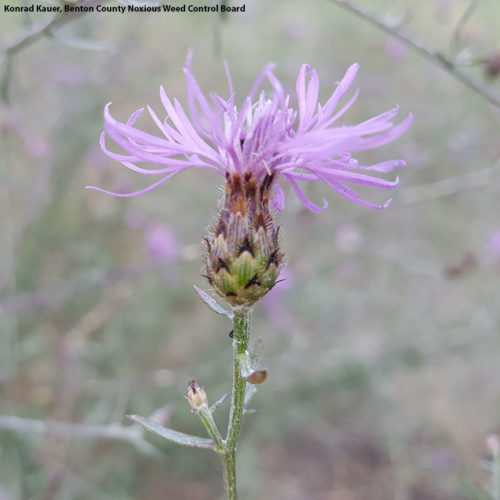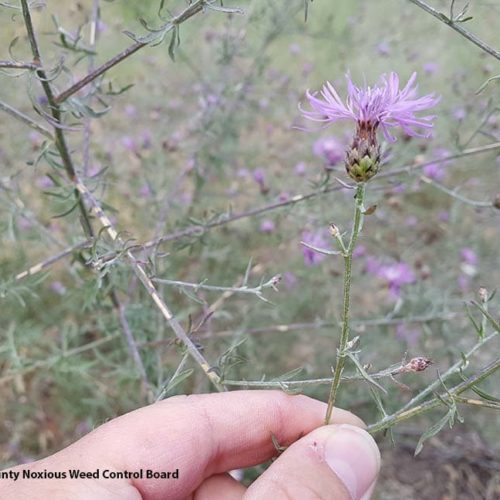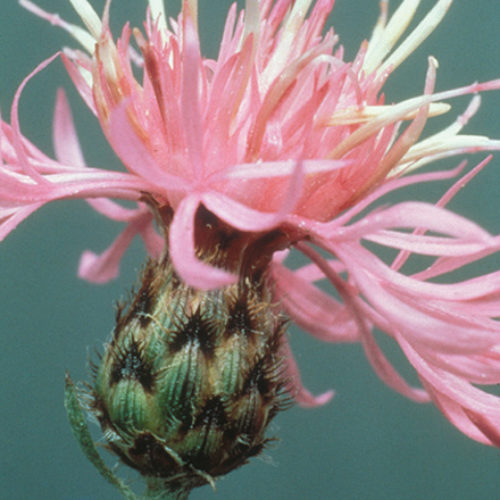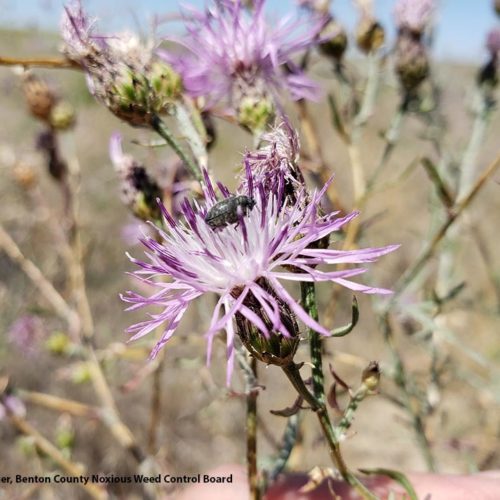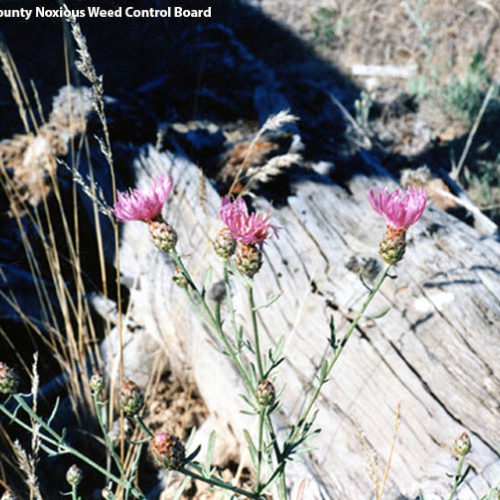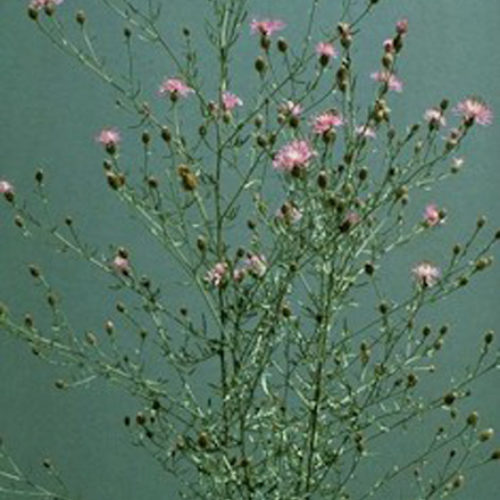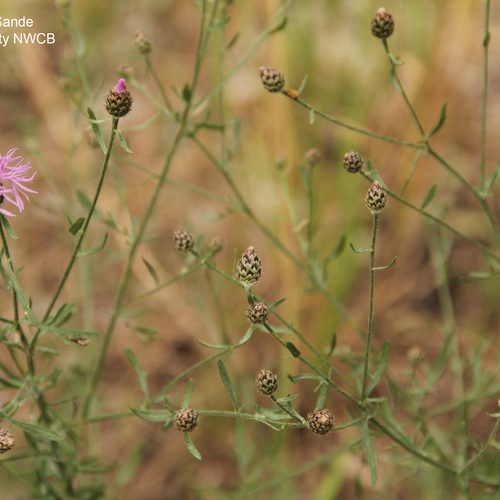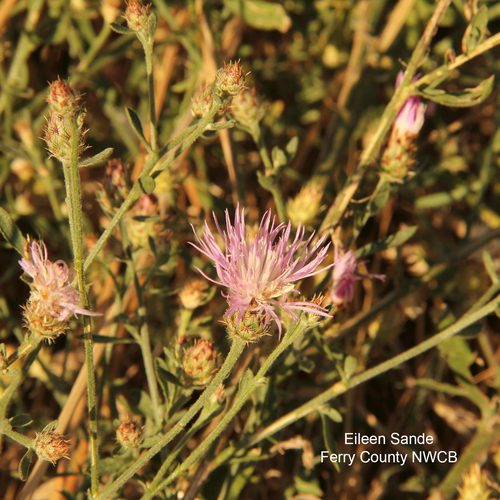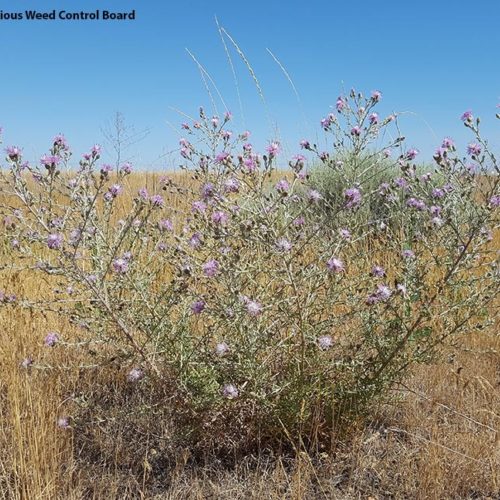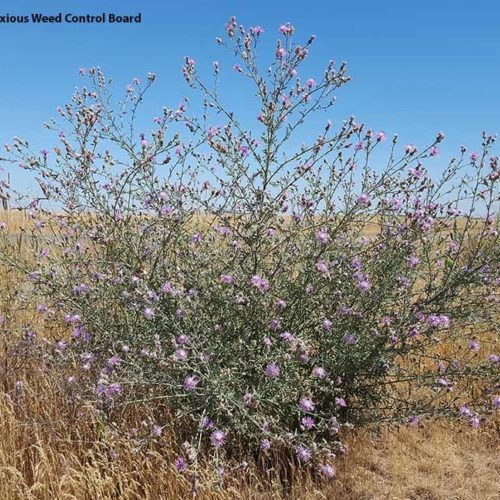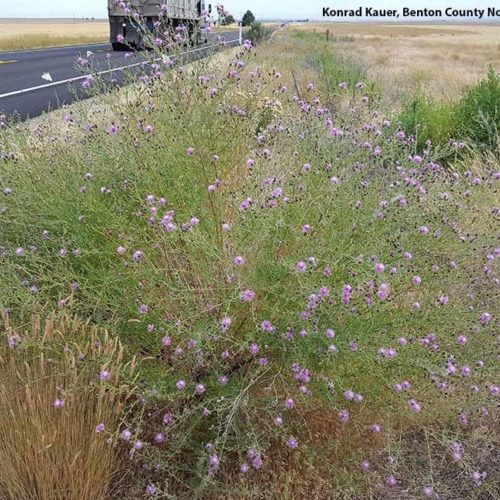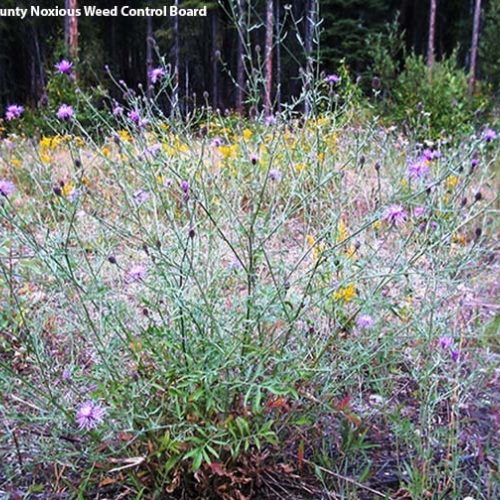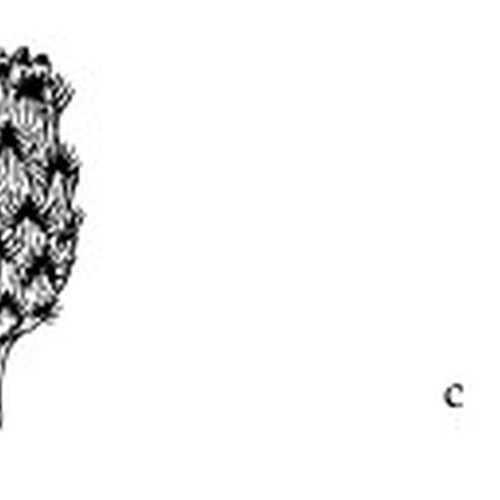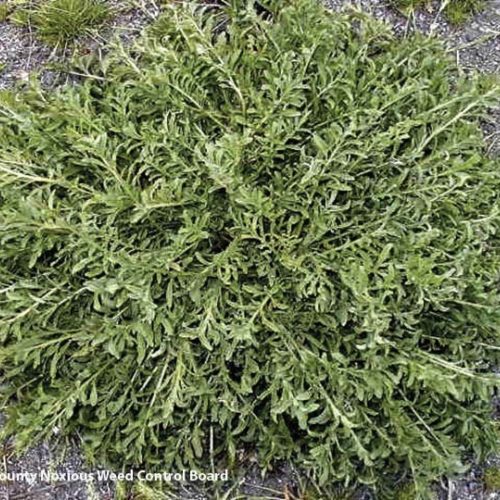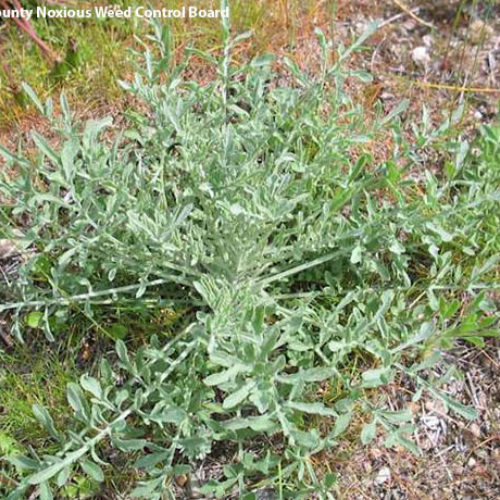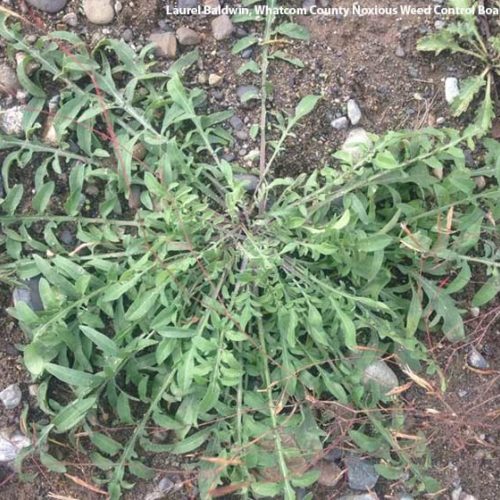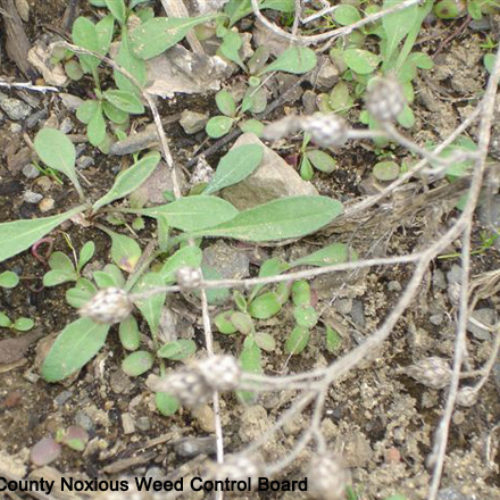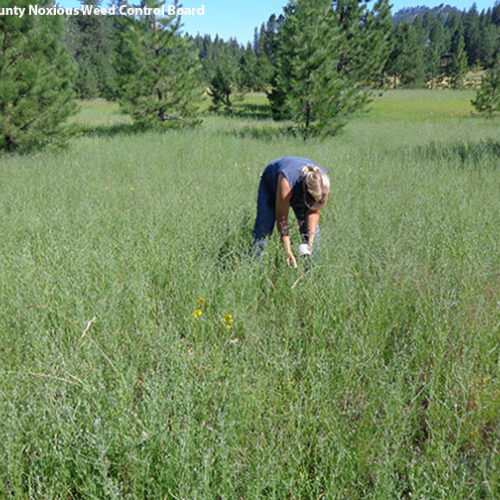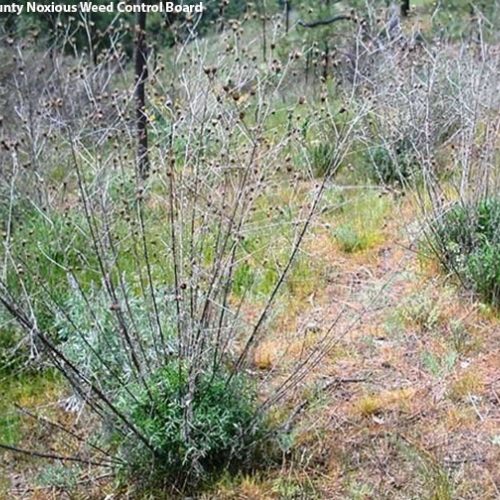Spotted Knapweed
Centaurea stoebe
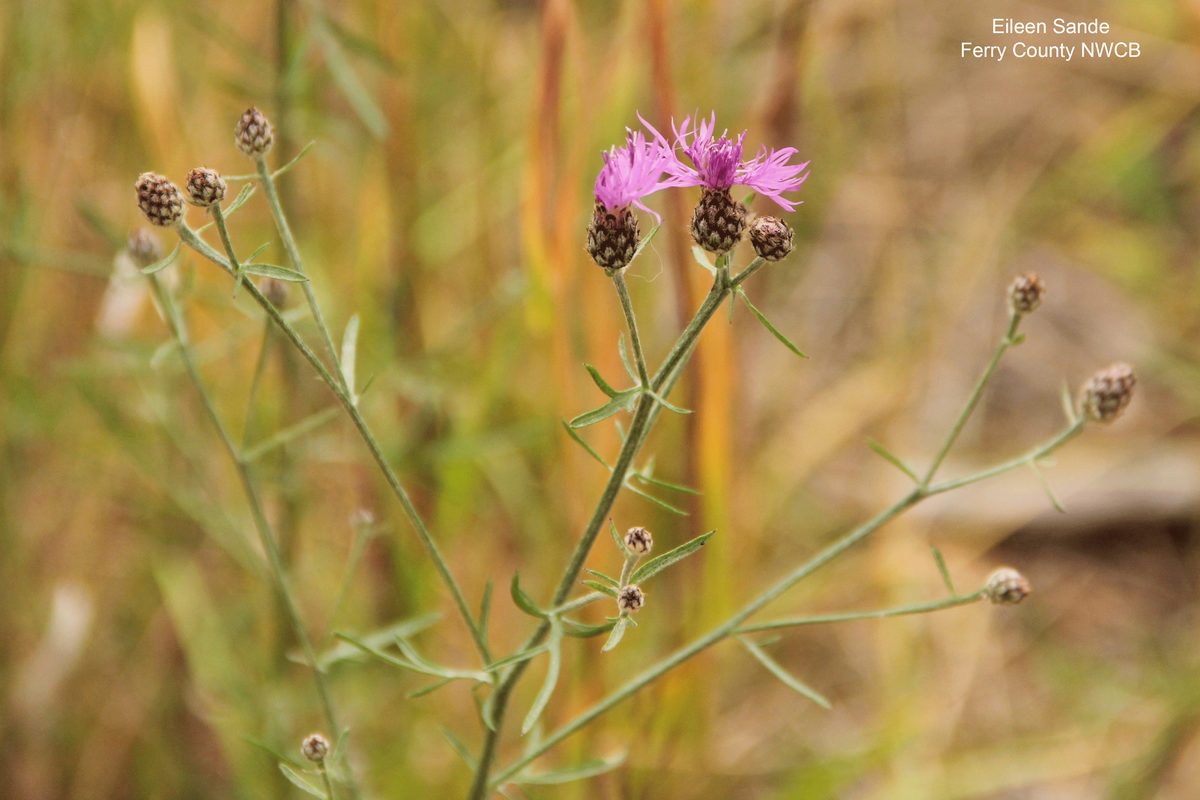
Family: Asteraceae
Other Scientific Names:
Centaurea biebersteinii, Centaurea maculosa
Weed class: B
Year Listed: 1988
Native to: Central Europe
Is this Weed Toxic?:
not known to be
Legal listings:
This plant is also on the Washington State quarantine list. It is prohibited to transport, buy, sell, offer for sale, or distribute plants or plant parts of quarantined species into or within the state of Washington or to sell, offer for sale, or distribute seed packets of seed, flower seed blends, or wildflower mixes of quarantined species into or within the state of Washington. Please see WAC 16-752 for more information on the quarantine list. For questions about the quarantine list, contact the Washington State Department of Agriculture's Plant Services Program at (360) 902-1874 or email PlantServices@agr.wa.gov.
Why Is It a Noxious Weed?
Spotted knapweed is a very aggressive species that can quickly infest large areas. Knapweed infestations increase production costs for ranchers, degrade wildlife habitat, decrease plant diversity, increase soil erosion rate and pose wildfire hazards.
How would I identify it?
General Description
It’s a biennial or perennial growing to 5 feet with a stout tap root. It is hairy and rough, with a somewhat woolly appearance. Plants start as a rosette (cluster of radiating leaves) of deeply lobed leaves the first year and then produce flowering stems.
Flower Description
Flowerheads are solitary. Bracts at the base of heads are egg-shaped with black veins and a brown/black triangular tip with comb-like fringe along its edge. Bract tip's color gives the flower head base a spotted look. Flowers are pink purple or white.
Leaf description
Leaves vary from unlobed on the upper part of the plant to lobed on the lower part of the plant. Lobed leaves have narrow lobes on each side of the center leaf vein. Leaves are blue-gray in color and may have glands in small pits.
Stem description
Spotted knapweed stems are upright and branched, with larger plants being more branched than smaller plants.
Fruit Seed Description
Seeds are 0.1 inch (2.5 mm) long, black or brown and oval. Seeds have short bristles (pappus) on one end.
May Be Confused With
Many species of Centaurea look very similar to each other, making identification difficult. If you need help with plant identification, please contact your county noxious weed coordinator.
Where does it grow?
It is found in dry meadows, pastures, rocky areas, gravel mines, roadsides, railroads, airports, vacant lots, hayfields, forest clearings and on the sandy or gravelly floodplains of streams and rivers. Please click here to see a county level distribution map of spotted knapweed in Washington.
How Does it Reproduce?
Spotted knapweeds reproduce by seeds with each plant producing 1,000 seeds on average. Seeds may be viable for up to eight years.
How Do I Control It?
General Control Strategy
Control methods must be repeated due to the length of time seeds are viable. Gloves should be worn when handling spotted knapweed due to its chemical properties that may be carcinogenic in large quantities.
Mechanical Control
Seasonal mowing and tillage
Cultural Control
Seasonal grazing
Biological Control
Many biological control agents are used on spotted knapweed. The sulfur knapweed moth (Agapeta zoegana) larvae feed within the plant's roots. The knapweed peacock fly (Chaetorellia acrolophi) larvae feed on the plant's seeds. The green clearwing fly (Terellia virens) larvae feed on seeds within flowerheads of spotted knapweed. The knapweed root weevil (Cyphocleonus achates) larvae feed within spotted knapweed roots. Larinus minutus, a seedhead weevil, larvae destroy spotted knapweed seed in the seedheads. Larinus obtusus, blunt knapweed flower weevil, larvae feed on seeds within the seedheads and adults feed on leaves. Urophora affinis and Urophora quadrifasciata are seedhead gall flies that are also used as biocontrol agents for spotted knapweeds.For more information about these biological control agents of spotted knapweed, please visit WSU Extension Integrated Weed Control Project.
Herbicide Control
Please refer to the PNW Weed Management Handbook, or contact your county noxious weed coordinator.
For More Information
Selected Knapweeds of Washington Brochure
See our Written Findings for more information about spotted knapweed (Centaurea stoebe).
Thurston County NWCB Fact Sheet on spotted knapweed
Clallam County NWCB Fact Sheet on spotted knapweed
Franklin County NWCB Fact Sheet on spotted knapweed
Spokane County NWCB Fact Sheet on spotted knapweed
Whatcom County NWCB Fact Sheet on spotted knapweed
King County NWCB Fact Sheet on spotted knapweed
Jefferson County NWCB Fact Sheet on spotted knapweed
Pierce County NWCB Fact Sheet on spotted knapweed
Lincoln County NWCB Brochure on spotted knapweed
Control Options for spotted knapweed from King County NWCB



